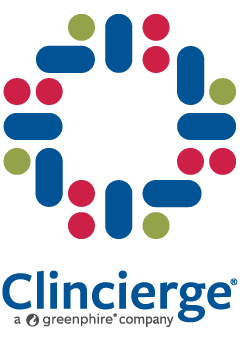September is Newborn Screening Awareness Month. Since the 1960s, every infant born in America receives a heel prick within the first 48 hours of life. The dried blood is then tested for various genetic, endocrine, and metabolic disorders. When the test detects a specific disease, families are educated, and a life-changing treatment plan is quickly implemented for the child. Many believe this screening process to be the most successful public health program in United States history.
In many rare conditions, time is of the essence in getting effective treatment to young patients. However, as with all rare diseases, a diagnosis can be extremely challenging to obtain. Receiving an accurate disease determination often takes five years or more, causing the patient to miss out on the critical window of opportunity for treatment.
Early Diagnosis and Treatment for Newborns
One example of this limited window of care occurs in young patients with Spinal Muscular Atrophy (SMA). SMA is a group of rare disorders attacking nerve cells in the spinal cord and brain stem. Most often hereditary, SMA is progressive and often renders patients unable to speak, breathe, or walk.
When infants with SMA receive a Food and Drug Administration (FDA)-approved gene therapy treatment before the age of two, their quality of life is greatly improved. Their motor skills progress significantly after this single-dose treatment, and their need for respiratory support drastically declines. Studies have shown patients above this age do not benefit from this treatment, so this life-changing drug is only approved for children under the age of two. Due to the short time frame for drug administration, diagnosing SMA patients exceptionally early in life is imperative.
What is the Recommended Uniform Screening Panel (RUSP)?
Since their inception, newborn screening tests have been regulated by individual states, with guidance from the United States (US) Federal Government. In 2002, the Secretary of the Department of Health and Human Services (HHS) created the Recommended Uniform Screening Panel (RUSP). This list includes the 35 core and 26 secondary conditions to be included in newborn screening tests. To be included in the RUSP, scientific evidence must prove early detection and treatment will positively affect patients with a specific disease.
Although the RUSP now exists as a guideline on the federal level, individual states continue to dictate the diseases covered in their newborn screenings. Some states test for as few as 31 of the 35 core conditions, while many still exclude diseases proven to be very treatable, like SMA.
Health care and pharmaceutical industry stakeholders have pushed to create a centralized newborn screening process requiring all states to test for the same genetic conditions. However, current legislation gives the ultimate decision-making power to individual state authorities rather than the federal government.
This back-and-forth between state and federal regulations continues to delay the approval of new diseases to be added to the RUSP. This power struggle ultimately harms the smallest of patients, who could be quickly diagnosed at birth and promptly treated for their rare disease.
Actionable Steps to Update the RUSP
In many cases, the approval process can be several months or even years, often involving review periods of six months or more at a time. While the task of getting a new disease added to the RUSP and individual state screening tests can seem daunting, there are several actionable ways to proceed:
- As an individual, you can write to state and federal representatives asking them to add these diseases. Encourage your friends and family to help with a telephone call, email, letter, or social media outreach.
- Patient advocacy groups play a huge role in getting new disorders added to the screening list. Members alert representatives on state and federal levels to the need for an illness to be included, often providing a personal plea as a parent or caregiver for a child with a specific condition. Many members attend rallies and appeal to legislators, offering a unique look into life with someone suffering from a genetic disease.
- Learn other ways to get involved here
Newborn Screening Advocacy Groups
By creating a system where all newborns are tested for the same genetic diseases, we can provide a new level of equity in an often disparate health care system. We look forward to a world where two infants born in neighboring states will receive the same level of testing and be given the same chance at a long, healthy life.
The newborn screening process has existed for over 50 years and has been responsible for saving countless lives through early disease detection. Over 7,000 rare disorders have been identified to date, and we must work together to find a more streamlined and inclusive way to include more of these diseases in the newborn screening process moving forward. A recent article by The American Journal of Managed Care supports this argument, stating that newborn screening procedures must keep up with the many scientific advances in rare disease studies.
We specialize in the complex trial logistics required for patients with rare diseases. We have supported over 70 clinical trials for genetic diseases, including several for SMA. Our services ease the burdens of participating in clinical trials for the smallest and sickest patients and their families, removing barriers and ensuring attentive support to logistical issues along the way.


